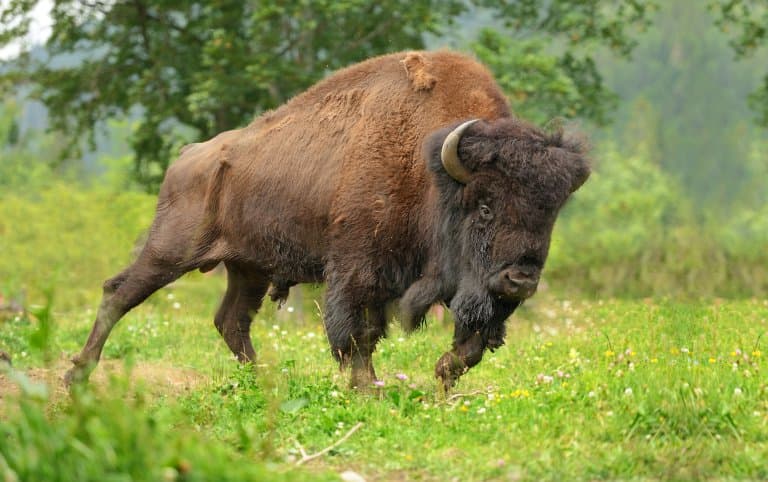Across the globe, the words “bison” and “buffalo” are often used interchangeably. However, these animals are actually two separate species that have helped change and shape the continents on which they live in different ways.
So, what really is the difference between a bison and a buffalo?

The TL;DR
Bison and the buffalo are both members of the Bovidae family, but they are different species, and even in a different genus.Both animals can grow horns, but their size and shape are quite different.
Their names can get quite confusing as American bison are commonly referred to as the ‘American Buffalo’ in American English.
The name buffalo is commonly used for two species of ‘true buffalo’ species – the African Cape buffalo, or Asian water buffalo.
These majestic beasts display differing behaviors. Bison like to live in social herds while buffalo are usually found in smaller groups.
Read on for the detail.
The Difference Between Bison and Buffalo
Despite the fact that bison are usually referred to as buffalo, both species of bison are separate from buffalo, which are a different group of bovids native to Africa and Asia.
Bison and buffalo have been used interchangeably in America for a long time; the term buffalo is currently deemed proper as a result of its widespread use in American English.
However, bison are not ‘true buffalo’.
What Is a Bison?
Bison belong to the Bovidae family and Bison genus. There are two living (extant) species and two extinct species.

These massive creatures have horns that point inwards. They are relatively short, compared to buffalo horns, reaching lengths of approximately 2 feet.
In size, bison are generally larger. Fully grown, they can weigh up to 1,400 kg which is over 3000 pounds!
To help distinguish them from buffalo, bison have a hump on their shoulders. The two bovines possess differing geographical distributions. Bison are native to North America, particularly the United States and Canada.
Herds of bison roam freely in vast numbers across North America. They move together in huge numbers across plains and grasslands.
What Is a Buffalo?
Buffalo are also part of the Bovidae family, meaning they are all bovines. However, they have members in the Syncerus genus (African buffalo) and the Bubalus genus (Asian buffalo).

Similar to bison, buffalos also have horns. Theirs are longer (reaching almost 6 feet) and tend to curve outwards rather than inwards.
Mature buffalos can weigh up to 1,200 kg. Thus, in size, they definitely pale in comparison to bison. Buffalos lack the prominent hump on their shoulders and are sleeker and less shaggy in appearance than bison.
True buffalos are found in multiple regions around the world. The African Cape buffalo is native to sub-Saharan Africa while the Asian water buffalo is found in several Asian countries.
There’s also a two species of Anoa, also known as ‘dwarf buffalo’, which are also considered as ‘true buffalo’ and are most closely allied to the larger Asian buffaloes.
Unlike bison, buffalos are more solitary creatures. They are more territorial, and so, are found in smaller groups or even alone.
Summary
Two iconic creatures that have intrigued us for generations. The bison, a symbol of the American West, while buffalo represent the untamed wilderness of parts of Asia and Africa.
However, bison are not buffalo! They are completely different species, just bison are sometimes called ‘buffalo’ in American English.
While visually and behaviorally distinct, bison and buffalo have both acquired unique adaptations that have allowed them to thrive in their respective ecosystems.
The differences between these animals demonstrates the richness or our planet’s biodiversity. Their presence reminds us not to overlook their presence and reinforces our responsibility to protect the organisms that inhabit the Earth alongside us.
Now you know the difference between bison and buffalo!